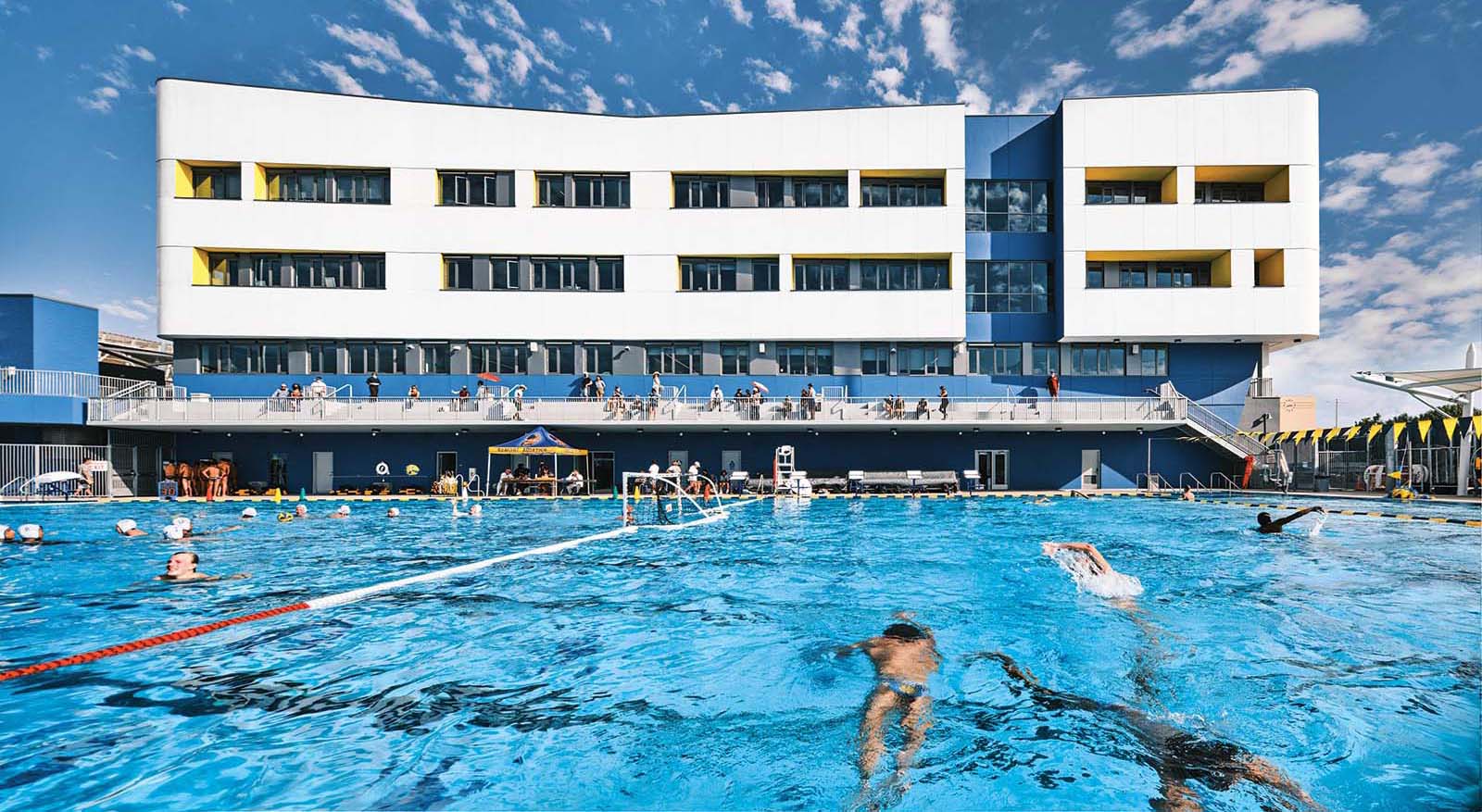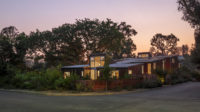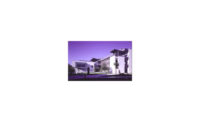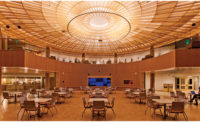According to some predictions, 65 percent of preschoolers today will hold jobs that do not yet exist. Whether such statistical forecasts are precisely accurate, it’s undeniable that technology and pedagogical approaches are in flux, challenging age-old models for classrooms with tidy rows of students facing a teacher in front. Ideas that learning can happen more effectively in other ways—with, for example, less formal clusters, in self-paced and interactive modes—have increasingly permeated the mainstream. “It’s become clear that schools need to be designed to accommodate long-range unknowns, as well as spatial needs that shift even over the course of an ordinary school day,” says architect John Dale, principal of HED and cofounder of the Council on Open Building (OB), which advocates for nimble adaptability of architecture, as well as of entire cities. Dale was eager to apply OB principles to an educational facility from the ground up—the first in the U.S.—and that opportunity came with the 260,000-square-foot Discovery building that HED designed, in collaboration with Moore Ruble Yudell (MRY), for Santa Monica High School, the public institution affectionately known as Samohi. But the versatility of this project, begun in 2017, was put to the test sooner than expected. By opening day, in August 2021, Discovery’s resilient interiors had been readily reconfigured for the social distancing, reduced class sizes, and ventilation adjustments the pandemic demanded. “What we accomplished would not have been possible in our old building,” says Carey Upton, chief operating officer of the Santa Monica-Malibu Unified School District, in Los Angeles County.

Volumes are pulled apart and windows deep-pochéd and painted yellow to break up the massing of the 260,000-square-foot structure. Photo © Inessa Binenbaum, click to enlarge.
The five-story, $155 million Discovery building—which includes classrooms, administration offices, a large cafeteria, a suite for medically fragile students, an Olympic-length outdoor pool, and a two-level parking garage—was designed with loungelike common areas in place of dedicated corridors, and movable interior partitions throughout, maximizing flexibility. The project is part of a 2010 phased master plan by R.L. Binder Architects (RLBA) to renew the 26-acre, 99-year-old campus (concurrent with adaptive restoration of some of its early structures). The Innovation building, by RLBA, completed in 2016, has a STEM emphasis, whereas Discovery focuses largely on the humanities. Samohi’s “house” system divides its student body of 3,000 into more intimate groups of about 600, each with its own principal, home base, and primary areas of study. Discovery contains two houses.

Plazas, stairs, and courtyard spaces abound at Santa Monica High School. Photo © Inessa Binenbaum
Its Open Building strategy is based on a permanent shell-and-core structure, with reconfigurable, reprogrammable, even replaceable fit-outs—enabling the building to evolve and remain sustainable over a long lifespan. In response to workshops with teachers, staff, administrators, and pupils, the architects designed a loft-type building—a plaster-clad shell and prefabricated steel moment-frame skeleton with a uniform, 32-by-38-foot column grid, making interior shear walls unnecessary. To enhance flexibility, vertical mechanical shafts are distributed evenly throughout, and most classrooms, commons, and labs have raised floors—containing electrical, data, water, and supply-air networks—allowing for relatively easy relocation of ports, outlets, and diffusers, as needed.

1
A cafeteria with glazed garage-style doors connects to the plaza (1) and loungelike areas open to terraces and classrooms (2). Photo © Inessa Binenbaum

2
Instead of deep rectangular floor plates, Discovery’s footprint is U-shaped, ushering daylight across the interiors. The U defines an open-ended courtyard, laced with overhead walkways and a broad stairway—with a growing green wall behind stadium and regular steps—providing the building with exterior circulation options, as well as social-gathering perches. Most of the interior vertical circulation rises along the plan’s perimeter, keeping the floor plates unencumbered. Echoing the rhythms of the big outdoor staircase, a wide indoor one forms a casual amphitheater, descending into a communal area. Each commons has a long whiteboard wall, with interactive video projectors alongside reconfigurable clusters of easy chairs and tables, encouraging spontaneous collaboration. “We treat the entire building as a learning space,” says Upton. Glass-and-metal folding walls open the classrooms visually and physically to the commons. With similarly blurred boundaries, the 12,000-square-foot multipurpose cafeteria—with its glazed garage-style doors—spills outside to a plaza. This dining hub serves the entire campus, with its kitchen also preparing meals for other district schools. Open-air learning areas will soon extend to a roof deck with a weather station, hydroponic and aquaponic labs, an aquarium, and a panel registering the performance of the building’s own sustainable systems (which incorporate electricity-generating PV panels and pool-heating solar collectors).

3

4
Echoing the rhythms of the outdoor staircase in the central courtyard is a wood stair with stadium seating to encourage casual study (3). Under the stair, a bench angles around the corner to offer an intimate sitting area (4). Photos © Inessa Binenbaum
Playing against the interior’s adaptability, the exterior has a more permanent, self-contained character, with its white-plastered facades (highlighted by deep, yellow window surrounds) and curving corners honoring Samohi’s Streamline Moderne architectural legacy. Also important were connections between the community and campus—just a few blocks from the beach, amid residential and commercial areas, and bound to the north by the I-10 freeway. Michigan Avenue runs through the school grounds, which open to the public after hours and on weekends, allowing for sharing of the swimming pool and meeting spaces.

Bridges and stairs link the two wings. Photo © Inessa Binenbaum
But the students are the main focus. “When they first walked into the new building,” says principal Antonio Shelton, “many said, ‘Wow, this is like a college campus!’ ” And now, at the end of the day, when they’re still collaborating in the commons, he adds, “We have to tell them, ‘Hey, it’s time to go home!’ ”
Across campus, MRY and HED have already broken ground for the master plan’s next phase, to include athletic, dance, and yoga facilities; media, recording, photo, and design labs—and more. But with all their work at Samohi, “completing construction is just the beginning; the process of change continues,” says MRY principal in charge James Mary O’Connor. “It’s about preparing this place for its next 100 years.”
Click plan to enlarge

Click drawings to enlarge

Credits
Design Architects:
Moore Ruble Yudell — James Mary O’Connor, design principal; John Ruble, partner; Takuji Mukaiyama, Anthony Wang, project managers. HED — John Dale, principal in charge; David Decker, Steffen Leisner, project managers; Duane Fisher, project architect
Architect of Record:
HED
Engineers:
HED (MEP); Saiful Bouquet Structural Engineers (structural); Wheeler and Gray (civil)
Consultants:
Pamela Burton & Company (landscape)
General Contractor:
McCarthy
Client:
Santa Monica-Malibu Unified School District/Santa Monica High School
Size:
260,000 square feet
Cost:
$155 million
Completion Date:
August 2021
Sources
Metal Panels/Curtain Wall/Frame:
Arcadia
Glass:
Vitro Architectural Glass
Acoustical Ceilings:
Armstrong; MDC ZintraBaffles
Window Treatment:
Mechoshade
Paints and Stains:
Sherwin-Williams
Wall Coverings:
Forbo







